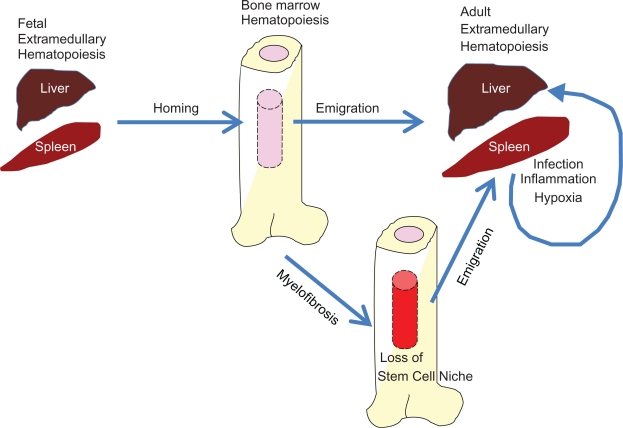Figure 1.
Major forms of extramedullary hematopoiesis. Extramedullary hematopoiesis occurs early in fetal development and also plays important roles in adult life. Hematopoiesis occurs in the fetal liver and spleen. Hematopoietic stem and progenitor cells in the fetal liver migrate to the bone marrow and the marrow becomes the major hematopoietic site after birth. The hematopoietic stem and progenitor cells in the bone marrow emigrate to the periphery such as the liver and spleen. Upon infection and resultant immune responses, various hematopoietic factors including TLR ligands and cytokines promote extramedullary hematopoiesis in the liver and spleen. A major role of this extramedullary hematopoiesis is to produce functionally mature antigen-presenting cells and phagocytes. Excessive and prolonged extramedullary hematopoiesis in the periphery occurs in the presence of autoimmune diseases and chronic infection. In these situations, extramedullary hematopoiesis is harmful for the host. When malignant disease such as primary myelofibrosis occurs, the marrow becomes unsuitable to support hematopoiesis and extramedullary hematopoiesis is greatly increased.

